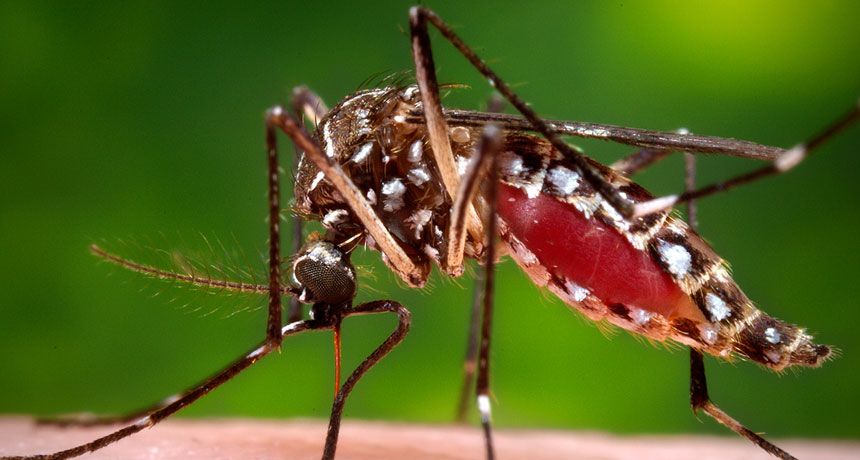Questions for ‘Chikungunya virus wings its way north’

One of the mosquitoes that has been spreading the Chikungunya virus.
CDC Global/ Flickr (CC BY 2.0)
To accompany feature ‘Chikungunya virus wings its way north.’
SCIENCE
Before Reading:
1. Name at least two infectious diseases that can be spread by mosquitoes.
2. How would you attempt to keep from picking up a mosquito-borne disease if it was emerging in your area?
During Reading:
1. Chikungunya is a mouthful. What does it mean in the tribal language that named this disease?
2. What are temperate zones, and why has chikungunya had a hard time moving into them?
3. What surprised scientists about chikungunya’s move to Réunion island?
4. What change occurred in the virus that allowed it to be carried by Aedes albopictus mosquitoes?
5. When did chikungunya first hit the Caribbean island of Saint Martin?
6. At least how many cases of the disease hit Florida in 2014?
7. If the chikungunya virus mutates in Brazil, why would that be a “worst-case scenario,” according to information contained in the story?
8. Among people in Réunion and Italy, what share of chikungunya patients had pain a year or more after infection?
9. How might a vaccine work to prevent symptoms in people who live in areas where the chikungunya virus is prevalent?
10. How might chikungunya be like Ebola, based on what you read in the story?
After Reading:
1. Work with a partner and create a poster aimed at warning people about the dangers of chikungunya and what steps they might take to lessen their risk of becoming sick.
2. There are ways to limit the growth of mosquito populations and to monitor any disease-causing germs they may carry. Medicine is coming up with new tactics to fight chikungunya in other ways. Both tactics are costly. Mosquito programs tend to focus on local treatments. Medical problems take a more national or global approach. If you were in charge of funding such programs but only had money for one, which strategy would you choose? And explain why you think that’s the best use of your funds.
MATHEMATICS
1. In 2005 and 2006, some 266,000 of Réunion island’s 800,000 residents got sick. Calculate this as a percent of the people on the island back then. At its peak, 40,000 people a week came into clinics for treatments. That one-week amount would be what percent of the total islanders who got sick during that epidemic? Show your calculations.